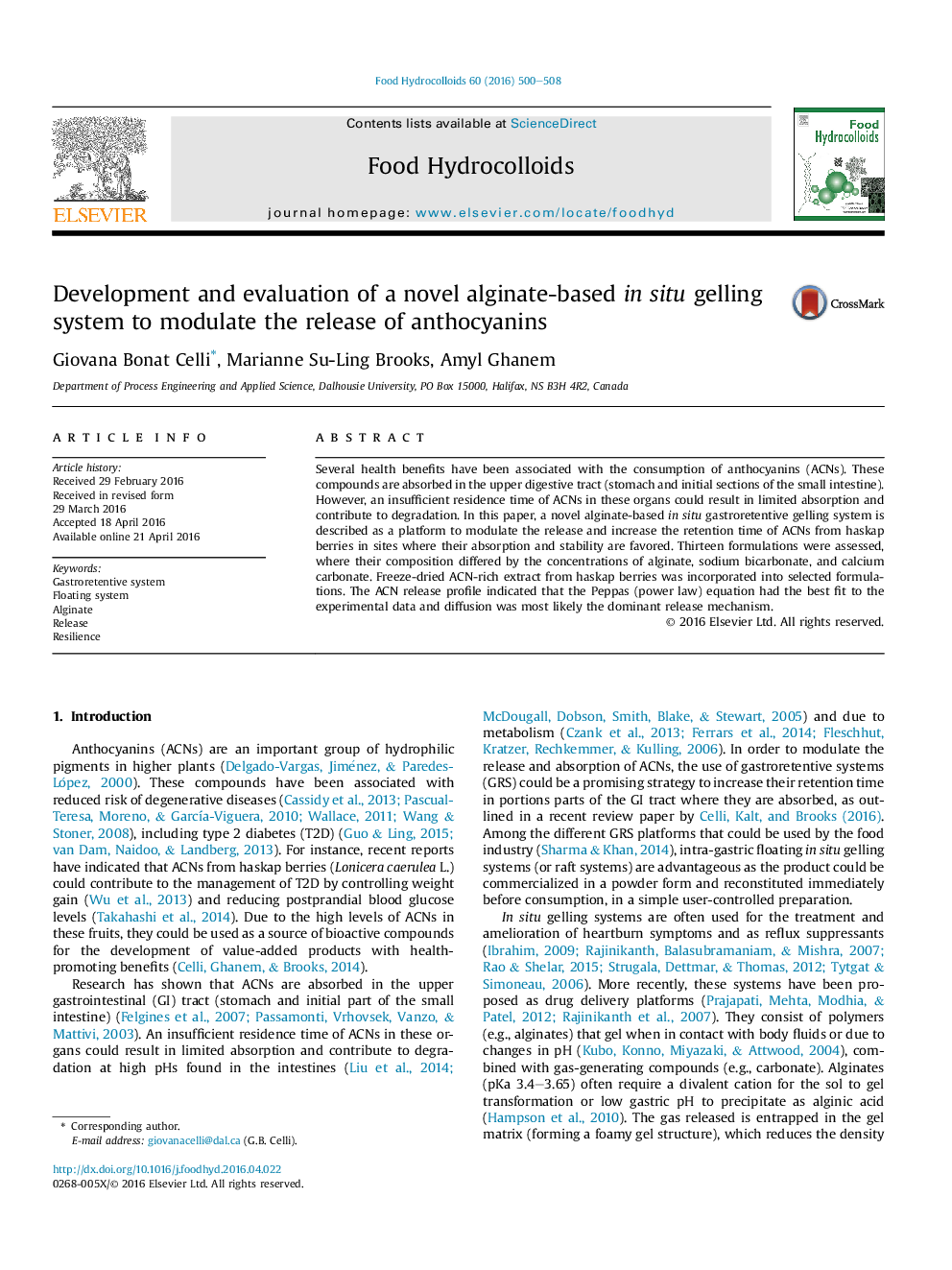| کد مقاله | کد نشریه | سال انتشار | مقاله انگلیسی | نسخه تمام متن |
|---|---|---|---|---|
| 603602 | 1454417 | 2016 | 9 صفحه PDF | دانلود رایگان |
• Alginate has been traditionally used by food industry and a novel use is proposed.
• Several health benefits have been associated to the consumption of anthocyanins.
• Gastroretentive system proposed as a novel approach for delivery of anthocyanins.
• In situ gelling system was investigated and characterized.
• Release of anthocyanins from this system followed Peppas (power law) equation.
Several health benefits have been associated with the consumption of anthocyanins (ACNs). These compounds are absorbed in the upper digestive tract (stomach and initial sections of the small intestine). However, an insufficient residence time of ACNs in these organs could result in limited absorption and contribute to degradation. In this paper, a novel alginate-based in situ gastroretentive gelling system is described as a platform to modulate the release and increase the retention time of ACNs from haskap berries in sites where their absorption and stability are favored. Thirteen formulations were assessed, where their composition differed by the concentrations of alginate, sodium bicarbonate, and calcium carbonate. Freeze-dried ACN-rich extract from haskap berries was incorporated into selected formulations. The ACN release profile indicated that the Peppas (power law) equation had the best fit to the experimental data and diffusion was most likely the dominant release mechanism.
Figure optionsDownload as PowerPoint slide
Journal: Food Hydrocolloids - Volume 60, October 2016, Pages 500–508
